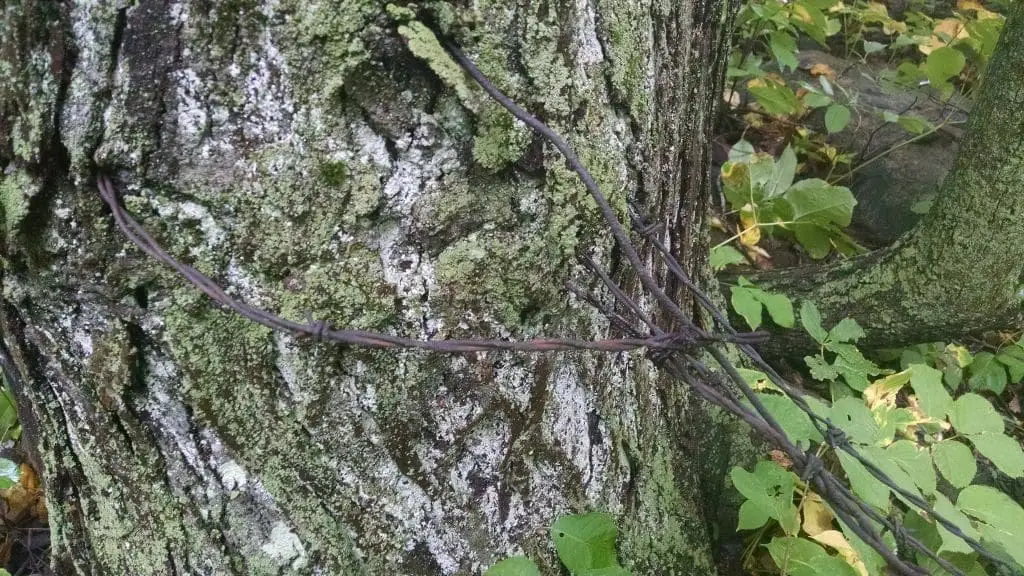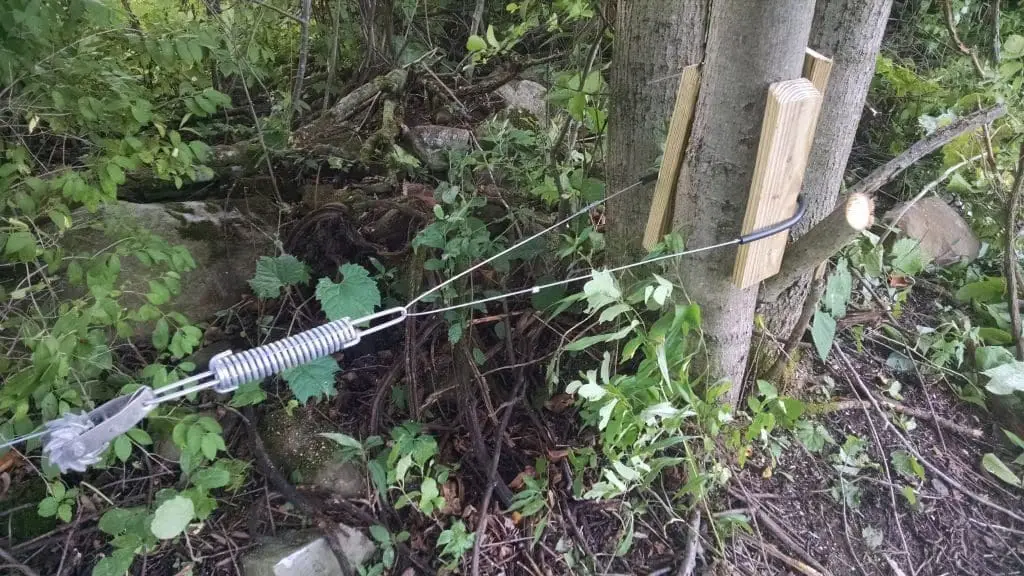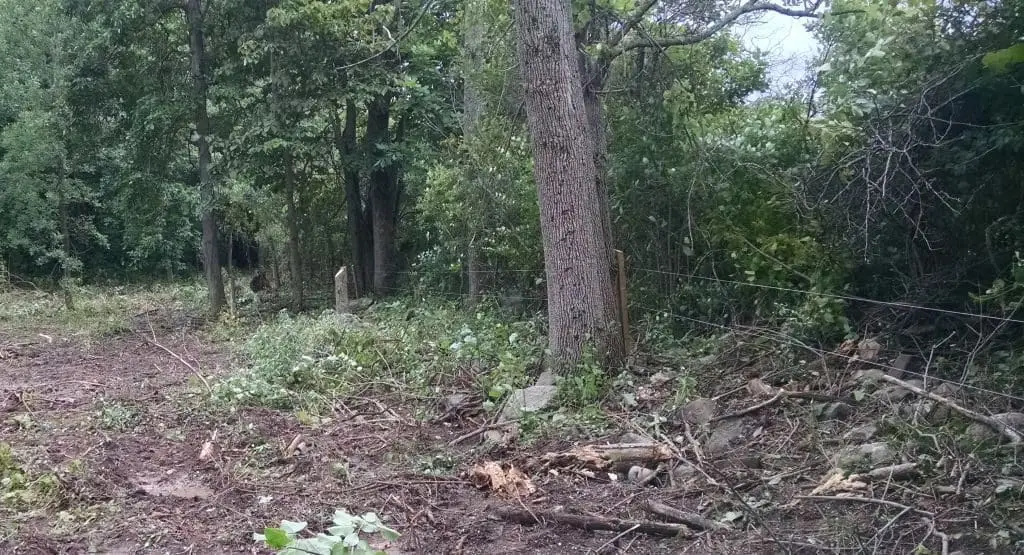Over the past few years I’ve worked to pare down my fencing costs. I’m glad to have a six strand high tensile fence up near the road, but I’ve realized that for most of the farm that is far more than I really need. I think the only places where I’d still build a four to six strand fence would be along roadways (and most of my road frontage is already fenced accordingly) or in fields where I’m directly adjacent to one of my neighbor’s herds. For the rest of the fencing I’m limiting it to two or at most three strands on the perimeter and a single 30-32″ strand for the interior fences. Doing so saves wire and hardware costs (strainers and insulators), and simplifies or eliminates bracing requirements.
I’ve begun fencing some overgrown, lightly wooded areas and heavily wooded areas for sylvopasturing cattle. This situation allows me to further reduce fencing costs by stringing wire on trees. This was a common practice in the old days of barbed wire, but trees are notoriously fond of eating barbed wire. I have a collection of ruined saw chains to prove it, and as does everyone else who cuts wood on old farms.

A better solution is to spike a wooden nailer (preferably either naturally rot resistant or pressure treated lumber) onto the side of the tree, then staple the insulator and wire to the nailer. As the tree grows the nailer continues to ride on the outside of the tree without becoming engulfed by the tree tissue, causing little threat to the tree or to future sawyers. I’ve wondered about the possibility of using composite deck boards instead of wood for longer-term rot resistance, but I think that the lifespan of treated lumber is about coextensive with the lifespan of the galvanized coating on the fence wire. That means I’m going to be doing a lot of fence rebuilding when I’m 70…


If I have time I plan on broadcasting a mix of meadow fescue, orchardgrass, and white clover, all of which have thrived in other wooded, wet pastures. Reed canarygrass is already present in sunlit patches, so I’m sure I’ll have representation from that species as well. Even if I don’t get it seeded, there will be good, albeit weedy, germination from the existing soil seedbank, and with a few years of managed grazing the cattle and climate will inevitably select the most appropriate plant species.
